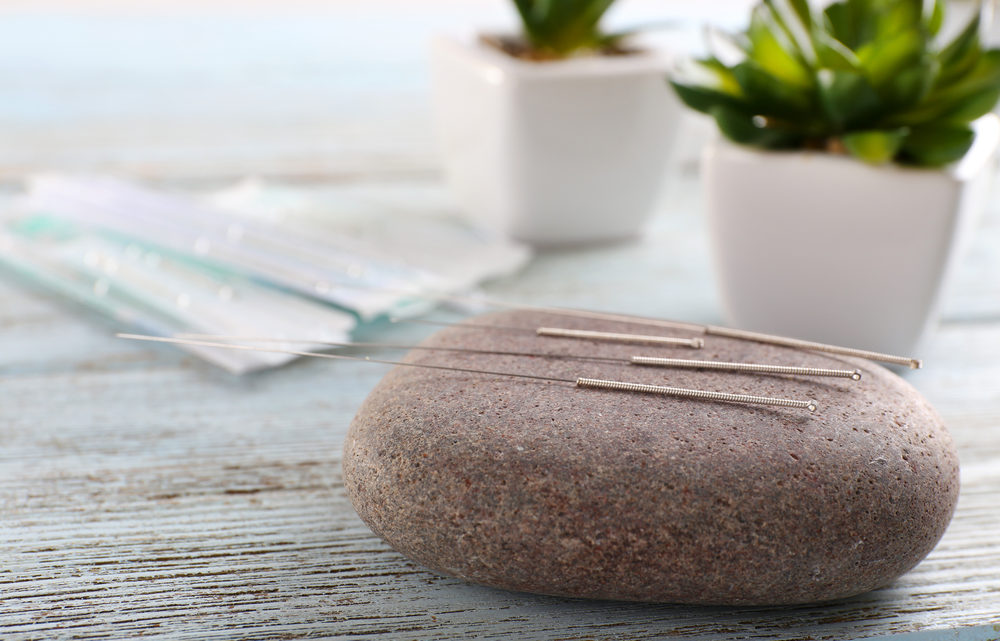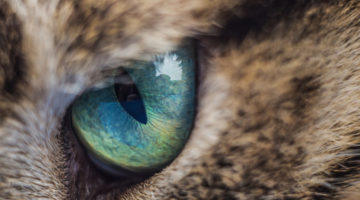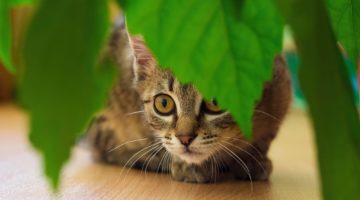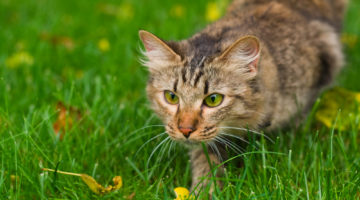This ancient healing modality can effectively address a wide range of health conditions in felines.
Acupuncture is one of the fastest-growing complementary therapies practiced on cats, and the number of veterinarians seeking training in this modality continues to increase. Acupuncture is generally well tolerated by cats, and can be used to help treat a whole spectrum of feline health problems, from arthritis to urinary symptoms.
A bit of background
Acupuncture was discovered by the ancient Chinese about 5,000 years ago. They learned they could affect physiological changes, control pain and stimulate organs or body parts by inserting needles into certain areas of the body.
The needles are not inserted at random, but rather into acupuncture points, also called acupoints. These acupoints are focal areas that have increased electrical resistance. When stimulated, they also have the ability to produce a response in a target organ.
Acupuncture helps the body heal itself. When the acupoints are stimulated by tiny needles, natural chemicals are released that act centrally on the nervous system. They release natural painkilling substances called endorphins. They also stimulate the body’s defense system and increase circulation. Because the nervous system goes all over the body, chemicals released from one spot may affect an organ or muscle further away.
Do cats tolerate acupuncture?
Acupuncture is not painful or distressing to a cat when done by a qualified and experienced veterinarian. The needles are very small – quite a bit smaller than the hypodermic needles used to give vaccinations. There may be a mild sensation of warmth or tingling when the needle is inserted, but it’s very transient. There may also be a sensation at the prick of a needle, but this doesn’t last when the needle is left in the acupoint. Some points are more sensitive than others and most veterinarians will avoid them altogether or use other methods such as low-level laser to stimulate those points. Most veterinary acupuncturists who practice on cats try to use as few needles as possible, use very small needles such as Korean Hand Needles, or use low-level laser.
What’s involved in a treatment?
Each acupuncture treatment is individualized to each patient. The points selected, the number of needles used and the length of the session all depend on the condition being treated. In general, most patients are seen once or twice a week initially, then the number of treatments is tapered off. Although a response may be seen after only one treatment, four to six are usually needed. The treatments last ten to 20 minutes.
What conditions can acupuncture help?
Acupuncture can be used along with regular veterinary medicine to treat a variety of feline conditions. We most commonly treat cats with musculoskeletal, renal and gastrointestinal problems, but many others can be addressed, including:
- Inflammation
- Pain
- Arthritis
- Neurological problems
- Traumatic injuries
- Intervertebral disc disease
- Inflammatory bowel disease
- Loss of appetite
- Liver with chronic elevated enzymes (support)
- Chronic constipation
- Endocrine and reproductive problems
- Thyroid disturbances
- Respiratory and cardiovascular conditions
- Asthma
- Hypertension
- Kidney chronic insufficiency (support)
- Painful urination syndrome
- Dermatologic problems
- Hyperesthesia (hair loss)
- Allergies
- Lick granulomas
- Behavioral problems
- Anxiety
- Immunologic condition
- FIV (support)
3 case reports
1. Constipation
Muffin was 16 years old when she presented with a three-day history of constipation. She had a painful abdomen full of hard stool, was vomiting, not eating and very cranky. Due to her age, her family was reluctant to hospitalize her and have enemas performed. Instead, she was given acupuncture using small needles and a low-level laser. Acupoints were selected to relieve abdominal pain and intestinal spasms, and improve motility in the colon. Muffin was also dehydrated, so 120 ml of fluids were given subcutaneously. Immediately after the acupuncture, Muffin was less painful and had an improved disposition. Within eight hours of receiving the acupuncture, she passed a large quantity of stool and began eating again.
2. Disc disease
Panda was a 12½ – year-old male cat that was brought in on an emergency basis for paresis of both hind legs. He was very painful and unable to stand. After radiographs, a diagnosis of intervertebral disc disease and arthritis was made. Because Panda had underlying kidney disease, the selection of pain control medications was limited. The family decided to try acupuncture. Acupoints were selected for pain control and muscle relaxation. After the 20-minute treatment, Panda went from screaming in pain to relaxed and purring. He continued to have regular treatments as needed for his chronic disc problems.
3. Arthritis and hyperesthesia
Kujo was an 18-year-old male with hyperesthesia and barbering of hair on his lower back. He was very painful in the lower lumbar area and spent a lot of time pulling out his hair there. His back felt hot in that area. He was diagnosed with pain and arthritis of the lumbar spine. Chiropractic and acupuncture were performed on Kujo – these were his only treatments. After five acupuncture treatments, the hair-pulling had completely resolved. Kujo went on to have monthly maintenance treatments.
Acupuncture can be a very powerful healing modality for cats, especially when combined with other therapies.







No Comment